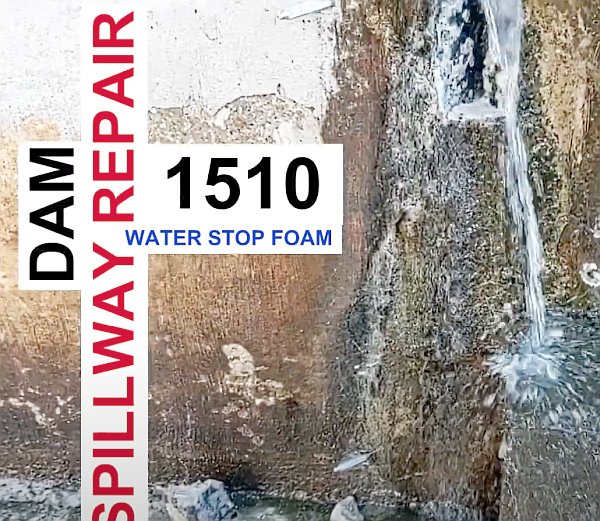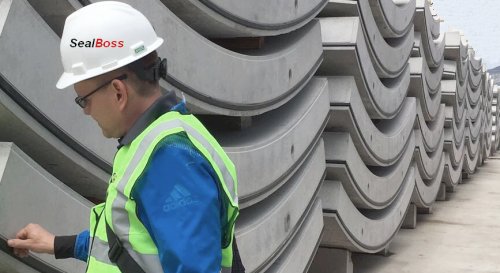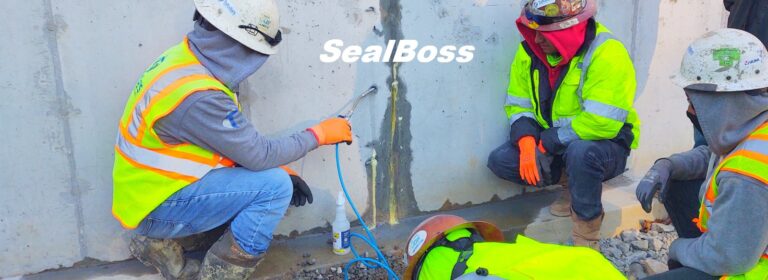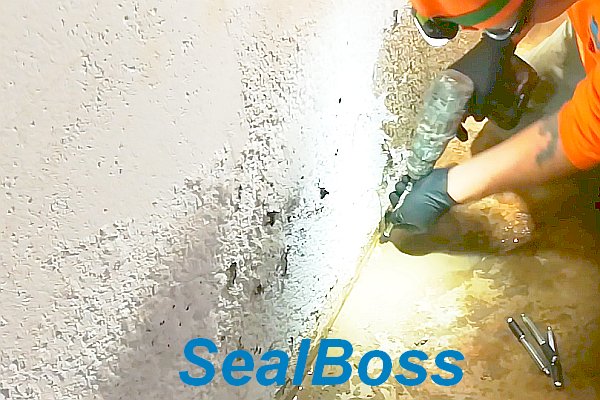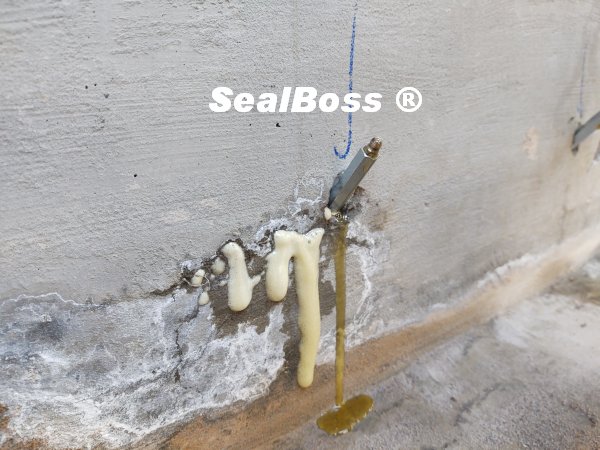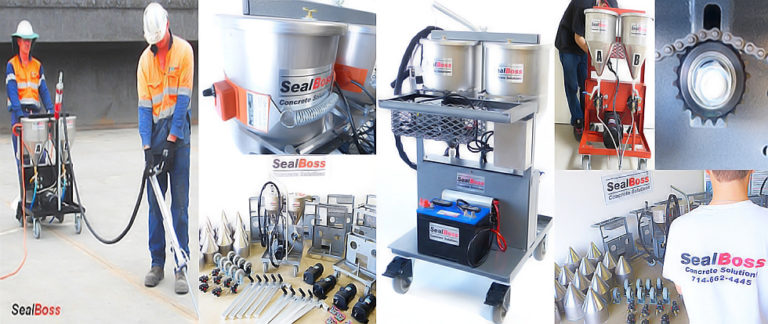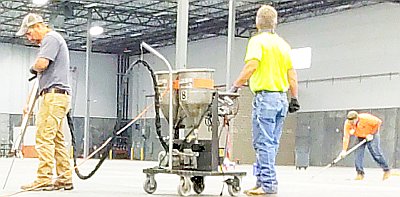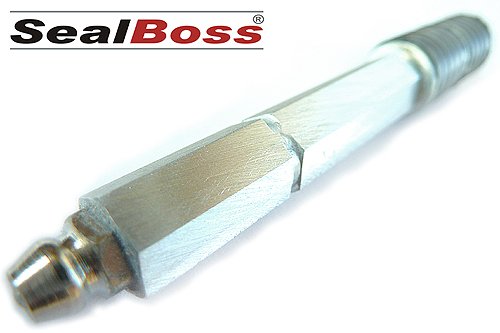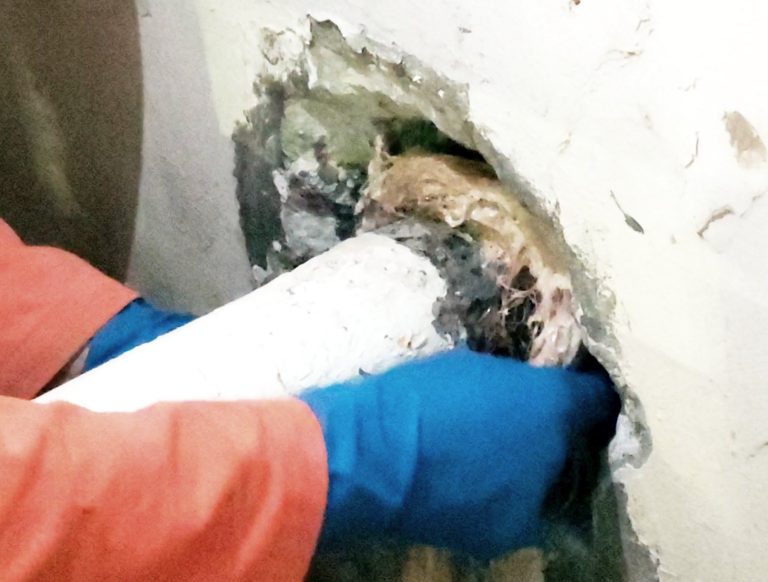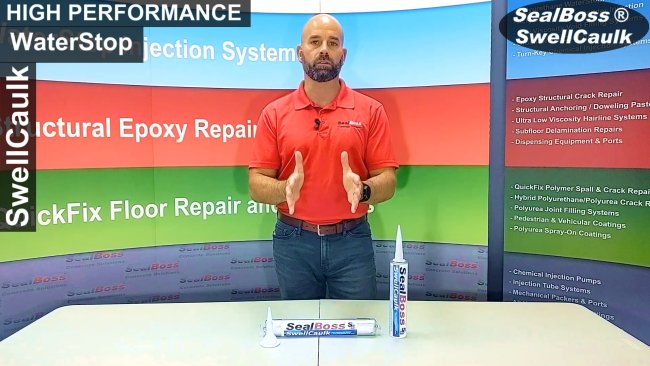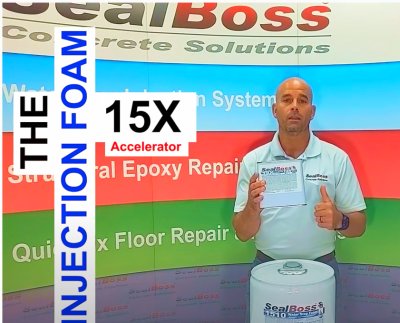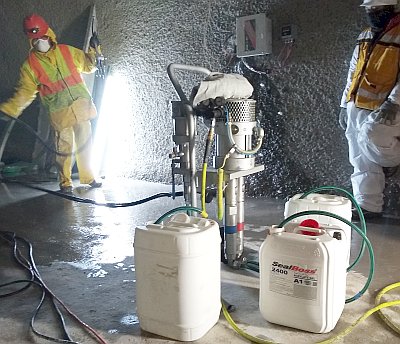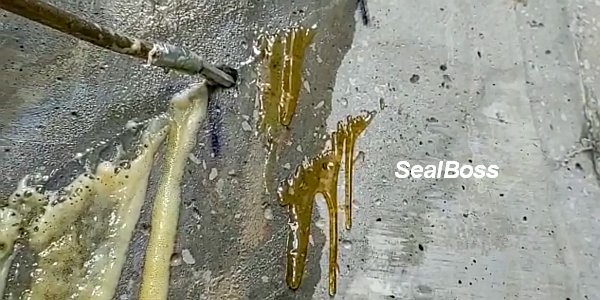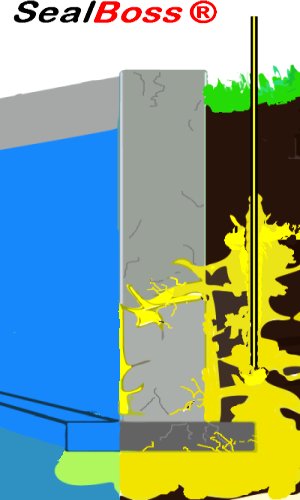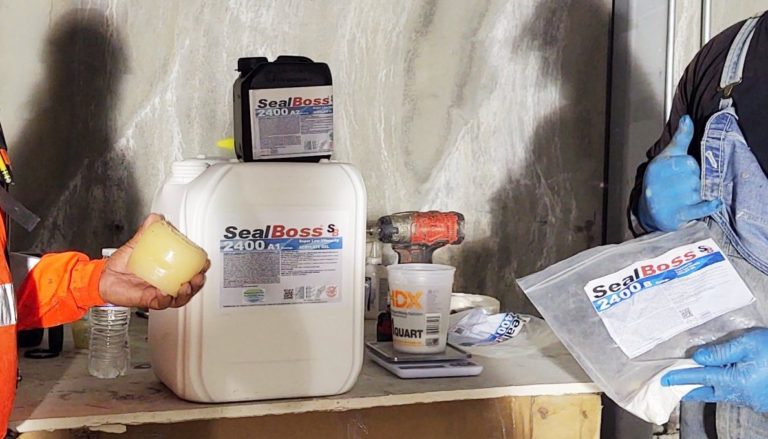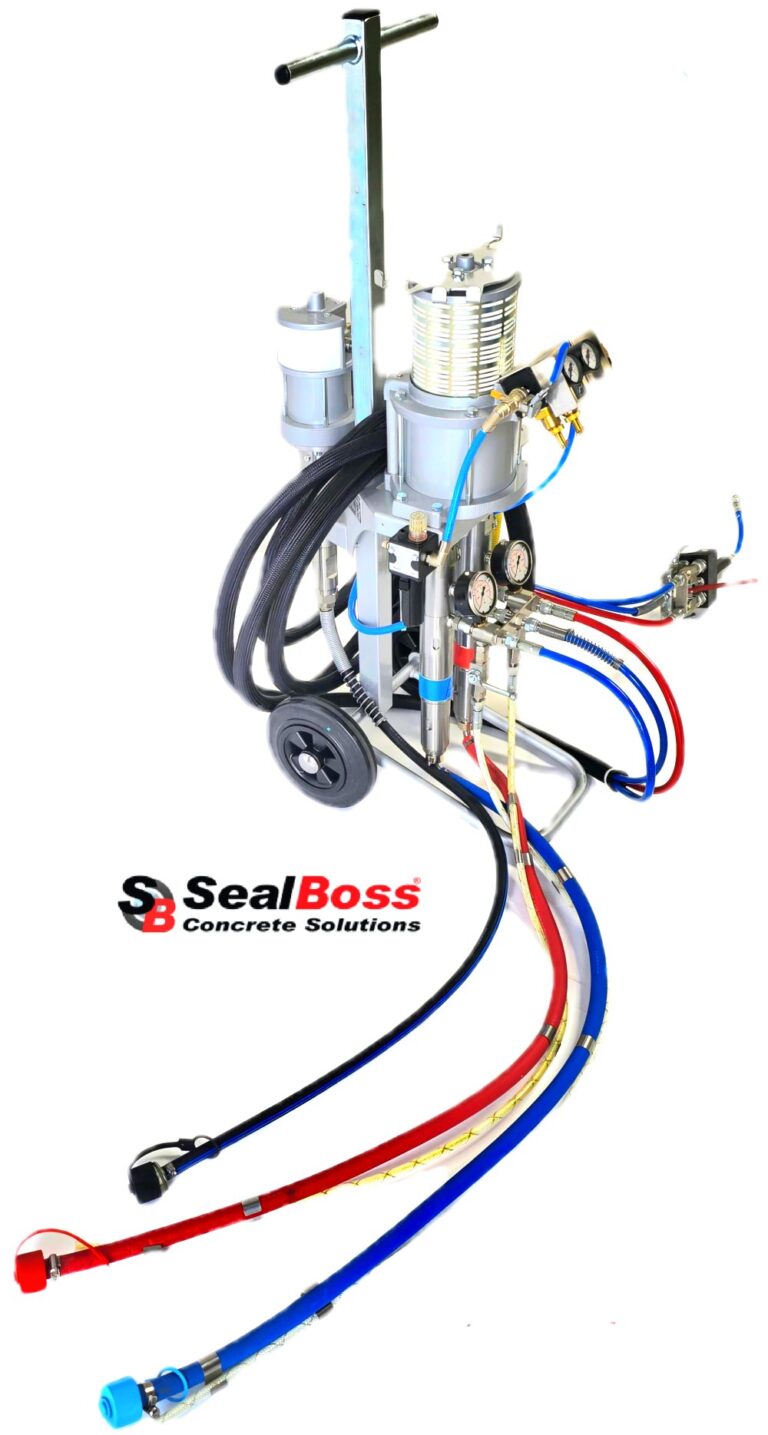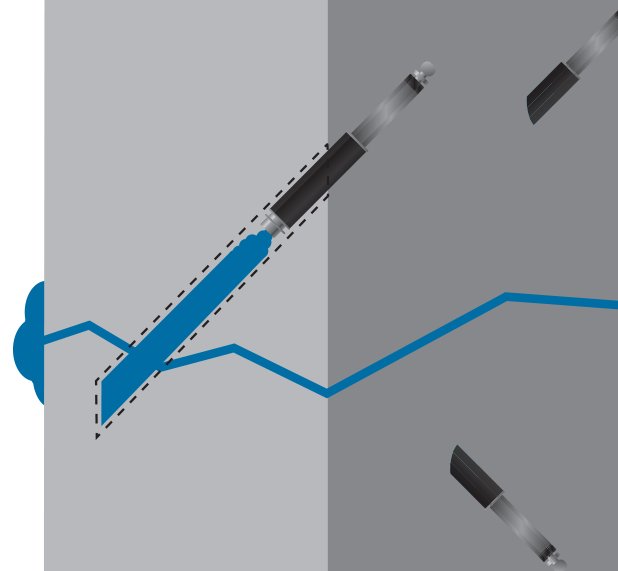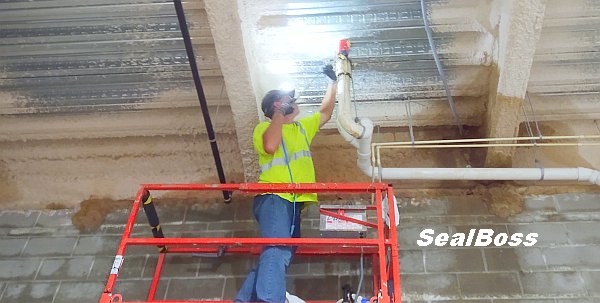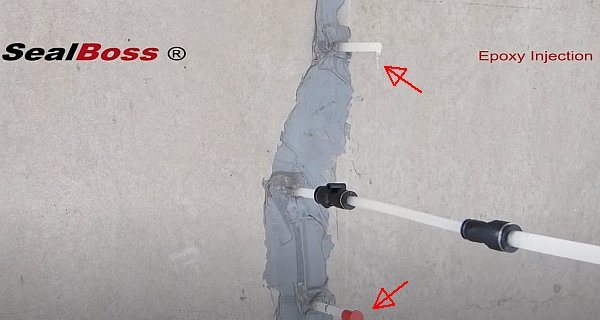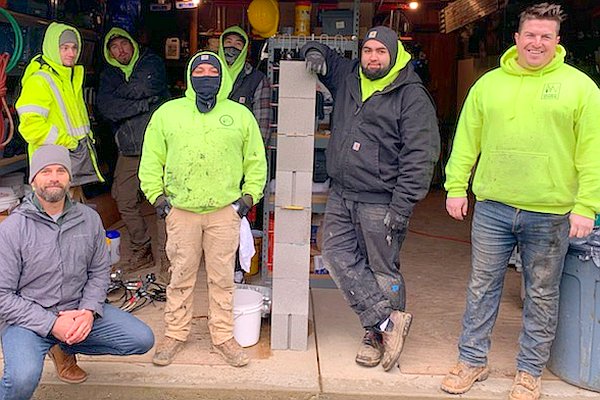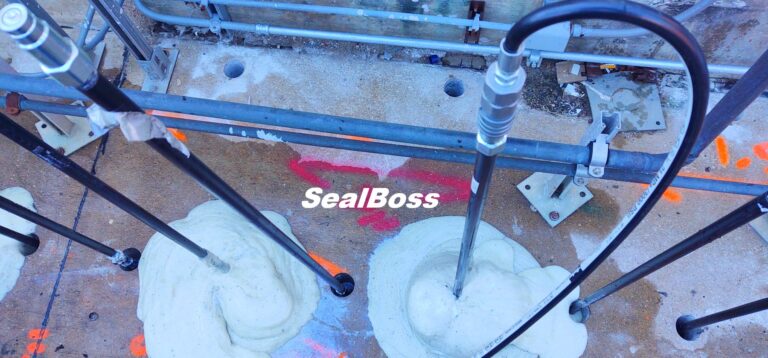Water Tank Sealant
Water Treatment Plant Tanks Sealed
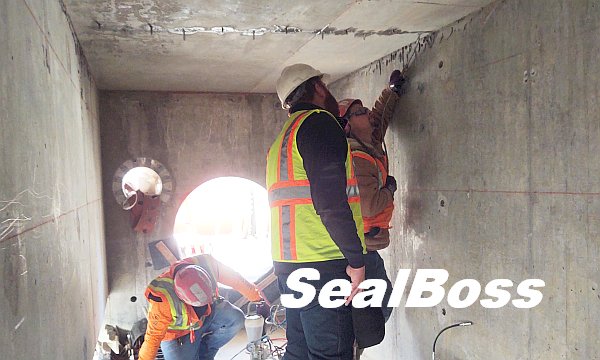
Polyurethane Water Tank Sealants for Water Treatment Plants
Polyurethane injection chemical grouts serve as versatile and adaptable sealants, capable of effectively sealing cracks even in less than ideal conditions. These grouts can be employed to seal both narrow and wide cracks, as well as dry and actively leaking ones, and those containing contaminants such as mud or mineral deposits.
SealBoss low-viscosity, hydro-active, expanding polyurethane injection resins and chemical grouts provide exceptional penetration and adhesion properties when applied to wet or dry cracks, ensuring a robust and lasting seal.
In large concrete structures, cracks can emerge anytime after the pore and cure process, particularly in structures with extensive surface areas. As such, it is not unusual for cracks to require sealing during the construction phase. Furthermore, water leaks often manifest within the first five years of a structure’s life.
Water Treatment Plants are designed with strict specifications that necessitate minimal water migration, leakage, inflow, and infiltration. Failure to address water tank leakage properly and promptly can result in an increased risk of subsequent damage, including reinforcement and concrete corrosion.
For over three decades, Water Treatment Plants have effectively utilized SealBoss polyurethane water tank sealants to address and resolve water leak issues in their concrete structures, ensuring the integrity and longevity of these vital facilities.
Injecting Cracks Exhibiting Water Intrusion Prior to Seal Test
Jobsite Overview
A newly constructed tank at a Water Treatment Plant in the mid-west necessitated the sealing of its cracks using a specialized polyurethane water tank sealant system.
A SealBoss technical expert was called upon to provide on-site guidance for the injection procedure and to assist SealBoss Certified Installers in formulating a plan for a cold weather injection.
Inspection Process
After going over safety procedures, and following safety protocol, a three-person crew entered the tank to examine the leaks. They identified two overhead cracks with active, slow-moving leaks, manifesting as drips.
Water Tank Sealant System Implementation
The objective of this injection process was to inject NSF/ANSI 61 certified SealBoss 1510 Water Stop Foam into the leaking cracks within a non-permit confined space. The SealBoss Injection System, featuring Evolution 13-100 AL injection packers and the P2002 ultra-portable injection pump, was utilized for this purpose.
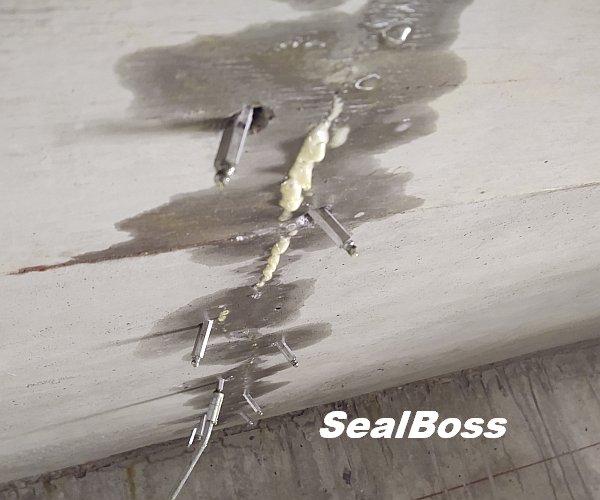
During the injection packers’ installation, some drill holes began to leak, indicating successful intersection with the crack for packer placement. Once the injection ports were secured, warm water was injected through each packer to facilitate catalyzation and accelerate the reaction. Next, the 1510 Water Stop Foam and 15x Accelerator were mixed in the P2002’s hopper, and the injection of the 1510 sealant into the water tank began.
Shortly after initiating the injection, the resin started displacing the water within the structure’s voids, causing water and gas to escape from the crack’s face. Injection continued until resin was observed emerging from the crack.
Each port was injected in a similar manner, adhering to the 1, 2, 3, 45 Degree Injection Guidelines. After the crack was completely injected and cured foam visibly flowed from the crack’s face, each packer was re-injected.
If immediate pressure buildup occurs, it indicates that the crack has been effectively sealed. If pressure does not build up instantly, the crack requires low-pressure reinjection to enable the resin to further penetrate the crack and displace any remaining water, ensuring a comprehensive and efficient seal.
Materials and Tools Used
- SealBoss 1510 Leak Sealing Foam
- SealBoss 15X Accelerator
- SealBoss 13-100 Evolution Packers
- SealBoss R70 Pump Cleaner
- SealBoss P2002 Injection Machine
Related Articles
- Water Treatment Plant – Crack Leak Sealing Repair – NSF/ANSI 61 Certified Foam Injection
- Water Treatment Plant Repair
Learn More
Feel free to reach out to us at 714-662-4445 for any questions, or request a callback here. We’re dedicated to helping you find the ideal solution. If needed, our expert technical representatives are available for on-site assistance to guarantee your project’s success.






























